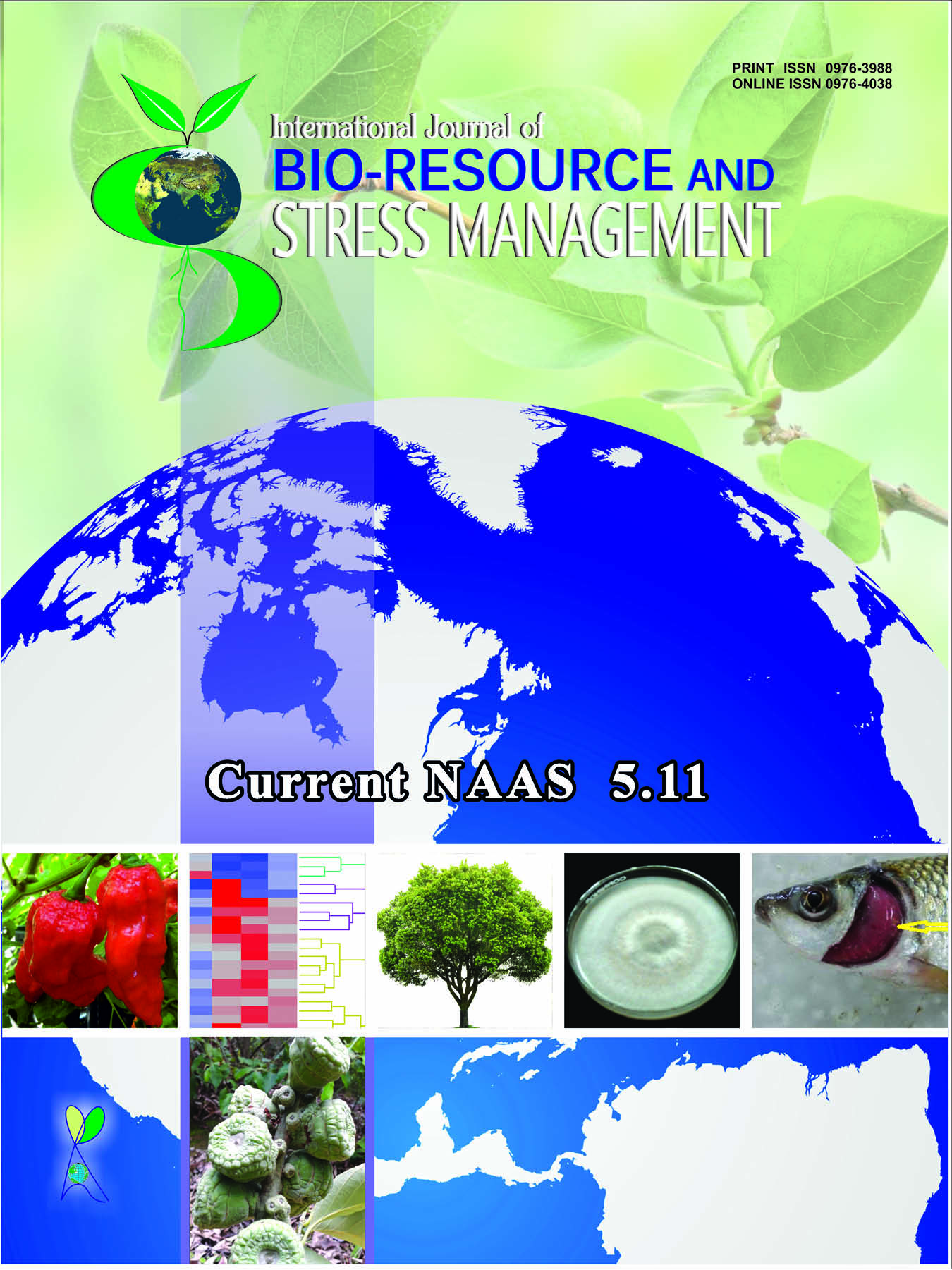Epidemiological Studies of Diverse Taro Genotype against Leaf Blight Caused by Phytophthora Colocasiae Racib.
Keywords:
Taro, epidemiology, leaf blight, Phytophthora colocasiae, multiple regressionsAbstract
The present investigations were carried out at the Main Experimental Station, Vegetable Science, NDUAT, Faizabad, Uttar Pradesh, India during Kharif 2006 and 2007 cropping season. Six taro genotypes were selected for studying leaf blight disease progress under field (epiphytotic) conditions. Disease showed a progressive increase and maximum terminal disease incidence in the 35th (03-09th September, 2006) standard meteorological week. The maximum disease incidence (100%) was recorded on the genotypes NDC-6 and NDC-50 while minimum on NDC-1 (42.50%) and PKS-1 (50.00%). The disease infection rate (‘r’) remained high at the initial stage but declined progressively due to adverse weather conditions and lack of availability of healthy tissues. All the genotypes showed more or less similar behavior in disease infection rate. The area under disease progress curve (AUDPC) pointed that disease pressure was more in year 2006 as compared to 2007. Multiple regression equation was drawn for the disease prediction based on data collected during the year 2006 and 2007 for all the six genotypes by taking the overall average of the disease incidence. In the year 2006, two weather parameters i.e. average relative humidity and cumulative rainfall explained maximum variability, whereas, in 2007, maximum temperature, average relative humidity and cumulative rainfall contributed in disease prediction with 100% precession. In all the genotypes, the predicted values lied in close proximity to the observed disease incidence.
Downloads
Downloads
Published
How to Cite
Issue
Section
License
Authors retain copyright. Articles published are made available as open access articles, distributed under the terms of the Creative Commons Attribution-NonCommercial-ShareAlike 4.0 International License, which permits unrestricted non-commercial use, distribution, and reproduction in any medium, provided the original author and source are credited. 
This journal permits and encourages authors to share their submitted versions (preprints), accepted versions (postprints) and/or published versions (publisher versions) freely under the CC BY-NC-SA 4.0 license while providing bibliographic details that credit, if applicable.





